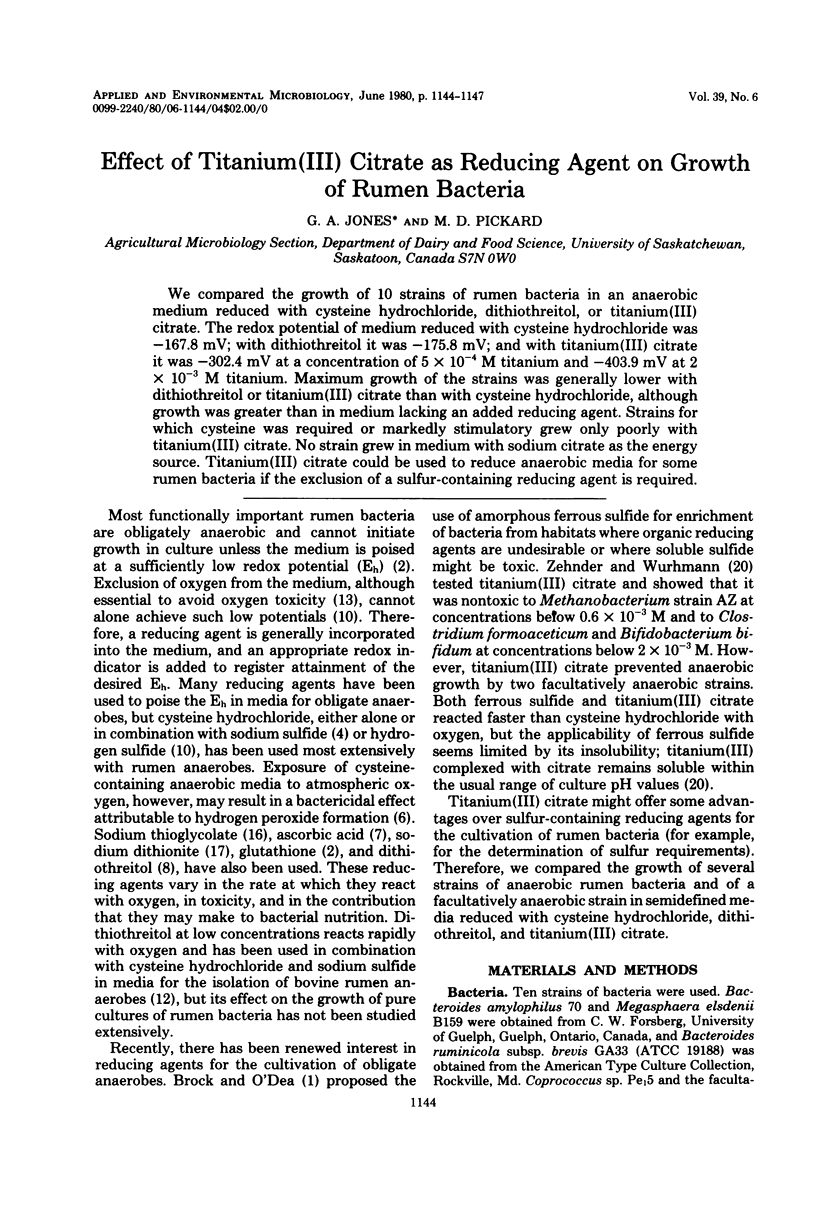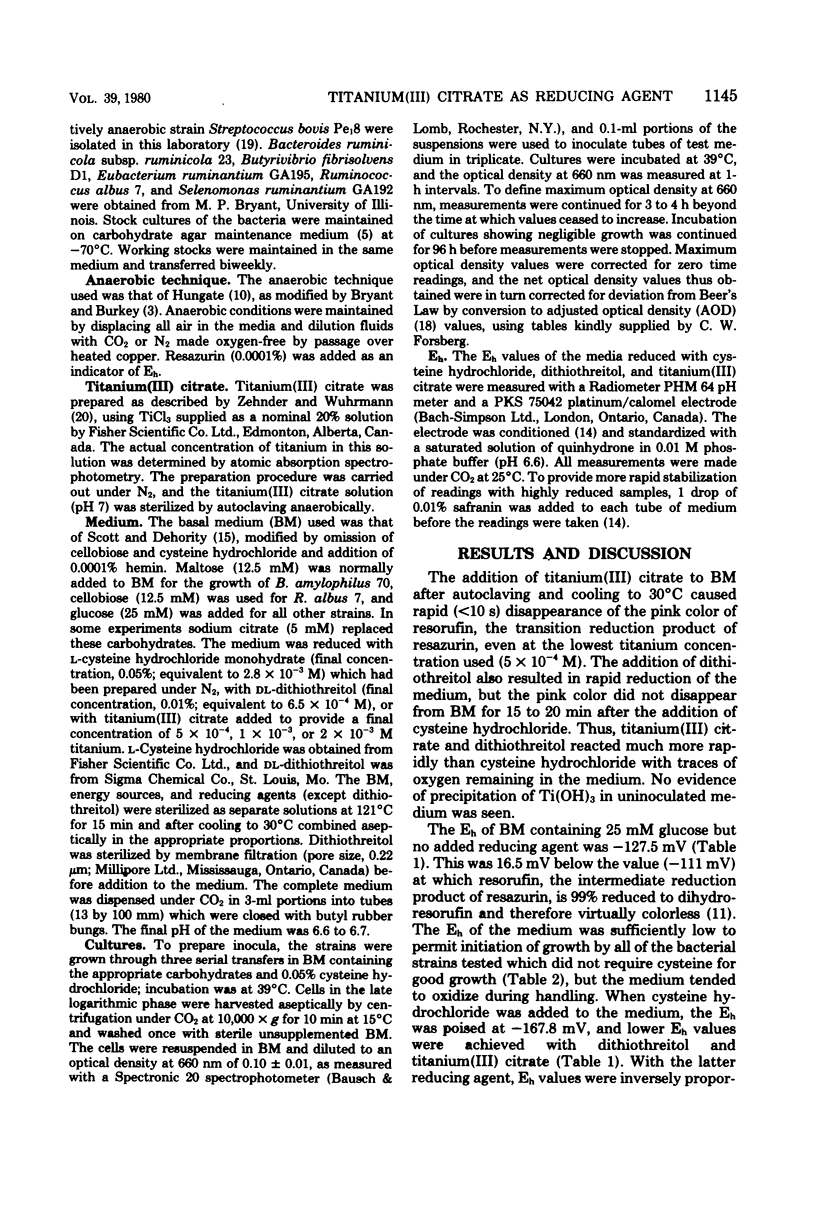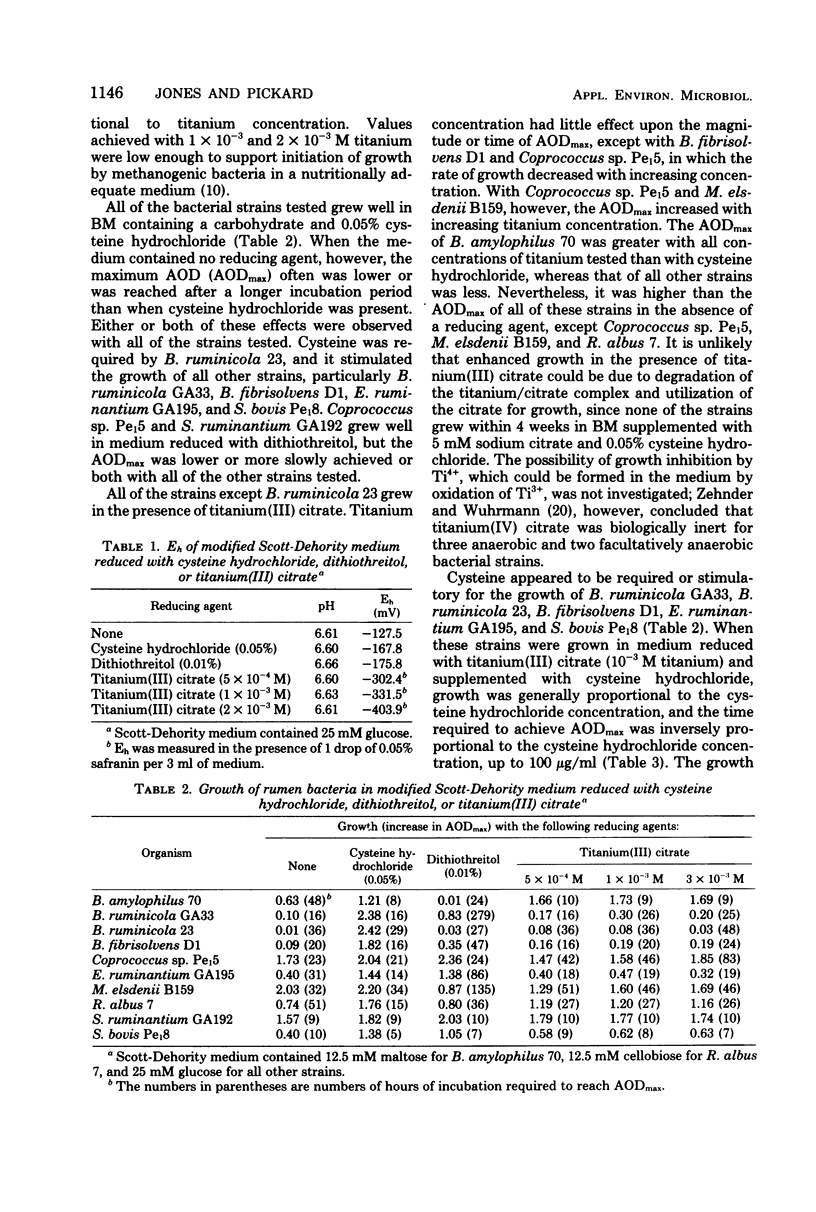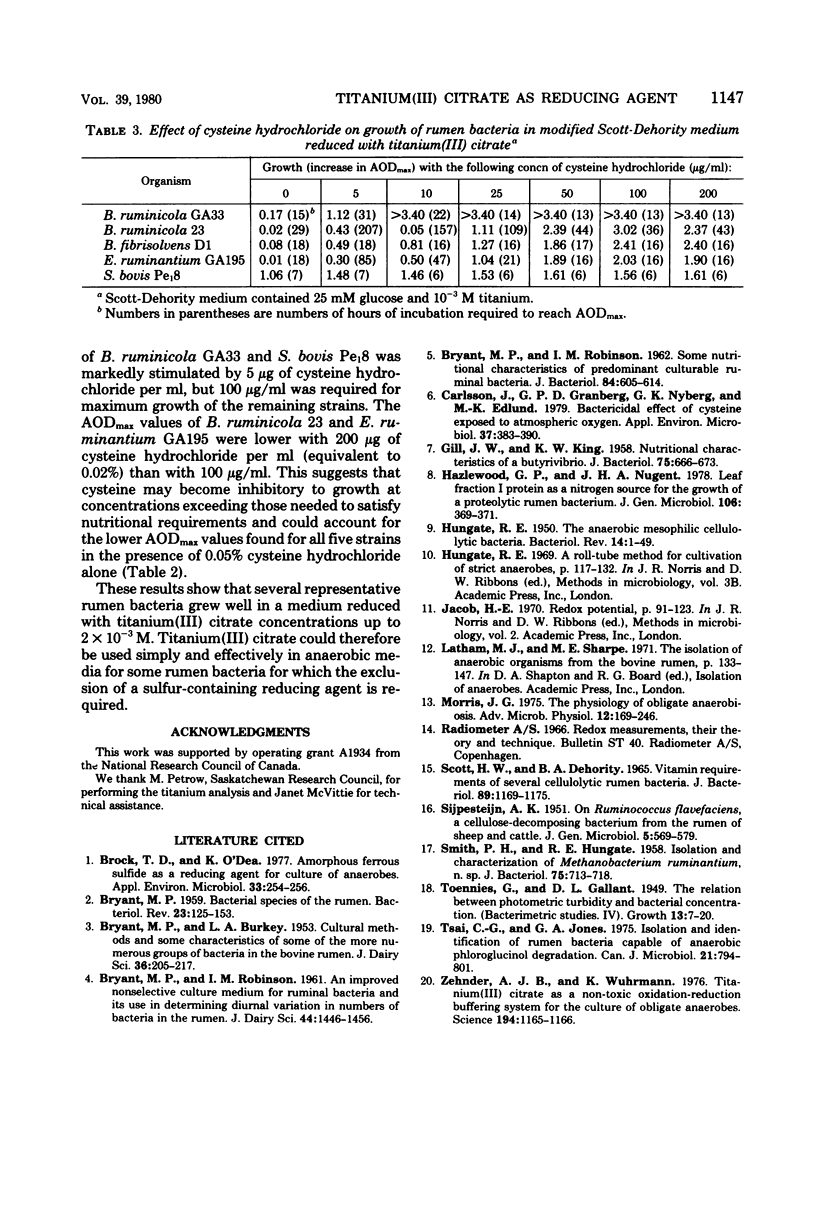Abstract
We compared the growth of 10 strains of rumen bacteria in an anaerobic medium reduced with cysteine hydrochloride, dithiothreitol, or titanium (III) citrate. The redox potential of medium reduced with cysteine hydrochloride was -167.8 mV; with dithiothreitol it was -175.8 mV; and with titanium(III) citrate it was -302.4 mV at a concentration of 5 X 10(-4) M titanium and -403.9 mV at 2 X 10(-3) M titanium. Maximum growth of the strains was generally lower with dithiothreitol or titanium(III) citrate than with cysteine hydrochloride, although growth was greater than in medium lacking an added reducing agent. Strains for which cysteine was required or markedly stimulatory grew only poorly with titanium(III) citrate. No strain grew in medium with sodium citrate as the energy source. Titanium(III) citrate could be used to reduce anaerobic media for some rumen bacteria if the exclusion of a sulfur-containing reducing agent is required.
Full text
PDF



Selected References
These references are in PubMed. This may not be the complete list of references from this article.
- BRYANT M. P. Bacterial species of the rumen. Bacteriol Rev. 1959 Sep;23(3):125–153. doi: 10.1128/br.23.3.125-153.1959. [DOI] [PMC free article] [PubMed] [Google Scholar]
- BRYANT M. P., ROBINSON I. M. Some nutritional characteristics of predominant culturable ruminal bacteria. J Bacteriol. 1962 Oct;84:605–614. doi: 10.1128/jb.84.4.605-614.1962. [DOI] [PMC free article] [PubMed] [Google Scholar]
- Brock T. D., Od'ea K. Amorphous ferrous sulfide as a reducing agent for culture of anaerobes. Appl Environ Microbiol. 1977 Feb;33(2):254–256. doi: 10.1128/aem.33.2.254-256.1977. [DOI] [PMC free article] [PubMed] [Google Scholar]
- Carlsson J., Granberg G. P., Nyberg G. K., Edlund M. B. Bactericidal effect of cysteine exposed to atmospheric oxygen. Appl Environ Microbiol. 1979 Mar;37(3):383–390. doi: 10.1128/aem.37.3.383-390.1979. [DOI] [PMC free article] [PubMed] [Google Scholar]
- GILL J. W., KING K. W. Nutritional characteristics of a Butyrivibrio. J Bacteriol. 1958 Jun;75(6):666–673. doi: 10.1128/jb.75.6.666-673.1958. [DOI] [PMC free article] [PubMed] [Google Scholar]
- HUNGATE R. E. The anaerobic mesophilic cellulolytic bacteria. Bacteriol Rev. 1950 Mar;14(1):1–49. doi: 10.1128/br.14.1.1-49.1950. [DOI] [PMC free article] [PubMed] [Google Scholar]
- SCOTT H. W., DEHORITY B. A. VITAMIN REQUIREMENTS OF SEVERAL CELLULOLYTIC RUMEN BACTERIA. J Bacteriol. 1965 May;89:1169–1175. doi: 10.1128/jb.89.5.1169-1175.1965. [DOI] [PMC free article] [PubMed] [Google Scholar]
- SMITH P. H., HUNGATE R. E. Isolation and characterization of Methanobacterium ruminantium n. sp. J Bacteriol. 1958 Jun;75(6):713–718. doi: 10.1128/jb.75.6.713-718.1958. [DOI] [PMC free article] [PubMed] [Google Scholar]
- Tsai C. G., Jones G. A. Isolation and identification of rumen bacteria capable of anaerobic phloroglucinol degradation. Can J Microbiol. 1975 Jun;21(6):794–801. doi: 10.1139/m75-117. [DOI] [PubMed] [Google Scholar]
- Zehnder A. J., Wuhrmann K. Titanium (III) citrate as a nontoxic oxidation-reduction buffering system for the culture of obligate anaerobes. Science. 1976 Dec 10;194(4270):1165–1166. doi: 10.1126/science.793008. [DOI] [PubMed] [Google Scholar]


